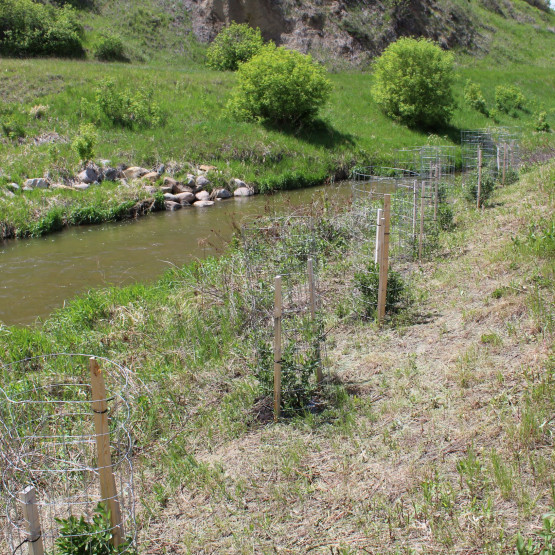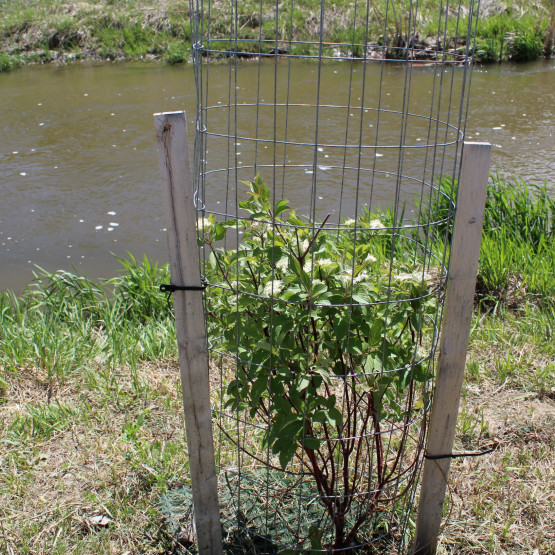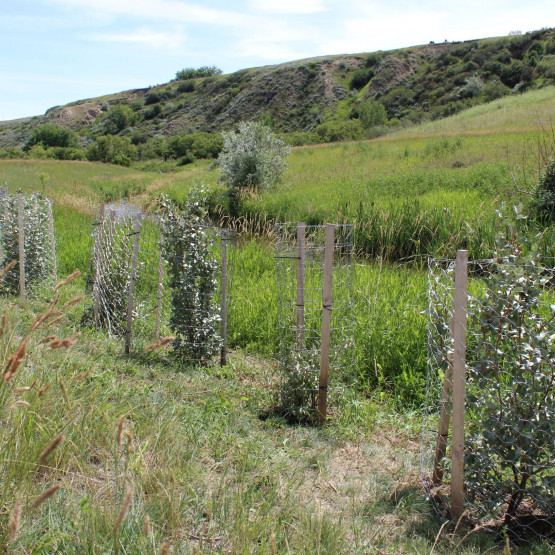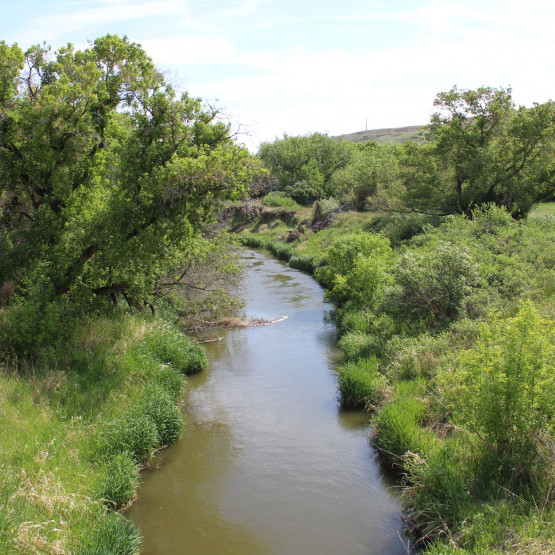Saratoga Park is a very popular place for Medicine Hat residents to spend time. Every day, many people visit the area walking dogs, cycling, jogging, or just having a leisurely stroll. This makes it an excellent site for SEAWA's work to be visible to the public. The project at this site began in 2018, in an attempt to restore vegetation to an area of bank along Seven Persons Creek that washed away with the 2013 flood. The restoration work done by the city was lacking native woody vegetation, and the area was beginning to develop a Russian olive infestation. In a partnership with the City of Medicine Hat, and with funding from the Watershed Resiliency and Restoration Program (WRRP), and Recreational Fisheries Conservation Partnerships Program (RFCPP), SEAWA planted 135 native shrubs on site, all of which have been growing very well. In 2021 and 2022 additional shrubs and trees including cottonwoods propagated by SEAWA volunteers, and spruce saplings donated by the Community Foundation of Southeastern Alberta, were planted directly across the creek from the existing restoration site.

Native species planted at this site include:
- Wolf Willow / Silverberry (Elaeagnus commutata)
- Golden Currant (Ribes aureum)
- Saskatoon (Amelanchier alnifolia)
- Thorny Buffaloberry (Shepherdia argentea)
- Red Osier Dogwood (Cornus sericea)
- Plains Cottonwood (Populus deltoides)
- Manitoba Maple (Acer negundo)
- White Spruce (Picea glauca)
With SEAWA's operations at this site including control of Russian olives, native trees have begun growing naturally in addition to the planted shrubs. Manitoba maple (Acer negundo) and Eastern cottonwood (Populus deltoides) have both been spotted growing at this site, likely due to nearby populations of these trees spreading seed.
Challenges

Likely the biggest challenge on site is the plastic erosion mat that covers the slope leading down to the creek. In order to plant shrubs and install cages, SEAWA staff have to cut holes in this erosion mat, which can be very tough due to the thick plastic mesh it is made of. This kind of erosion control is popular due to its low cost, however it can cause issues if left in place due to the fact that it does not decompose, and does not easily move to allow plants to grow through it.
Additionally, the presence of competitive weeds such as field bindweed (Convolvulus arvensis), and Canada thistle (Cirsium arvense) makes it more difficult for planted shrubs and naturally growing native species to establish.



















